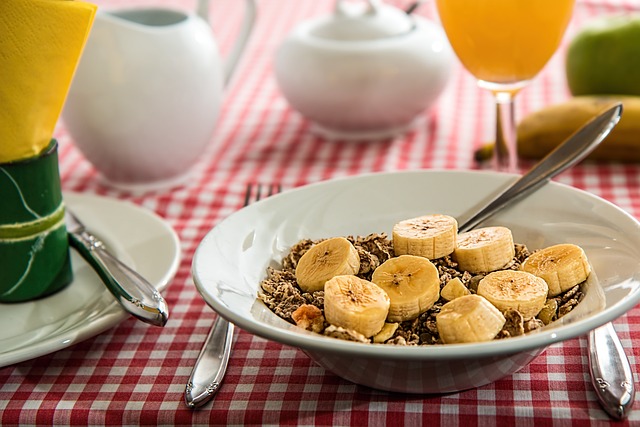In a world that often glorifies quick fixes and overnight transformations, the true secret to lasting health and well-being lies in building sustainable habits. While grand resolutions and ambitious goals may feel motivating at first, they often lead to burnout or frustration when results don’t materialize as expected. Instead, focusing on small, incremental changes can pave the way for long-term success. This approach not only makes healthy living more achievable but also integrates it seamlessly into your daily life. Let’s explore how you can adopt this mindset and create habits that stick.
Why Small Changes Matter
The allure of drastic lifestyle overhauls—like crash diets, extreme workout regimens, or complete digital detoxes—is understandable. However, research shows that such sweeping changes are rarely sustainable. The human brain is wired to resist radical shifts, especially when they disrupt established routines. On the other hand, small changes are less intimidating, easier to maintain, and compound over time to produce significant results.
Consider this analogy: If you save just $5 a day, it might not seem like much initially, but over a year, that adds up to $1,825. Similarly, swapping one sugary drink for water each day or walking an extra 1,000 steps daily might feel insignificant at first, but these micro-habits can dramatically improve your health over weeks, months, and years.
The Science Behind Habit Formation
Understanding the psychology of habit formation is crucial for making lasting changes. According to James Clear, author of Atomic Habits , habits are formed through a four-step process known as the “habit loop”:
- Cue : A trigger that prompts a behavior (e.g., feeling stressed).
- Craving : The motivation behind the behavior (e.g., wanting relief from stress).
- Response : The action taken (e.g., going for a walk instead of reaching for junk food).
- Reward : The benefit gained from the action (e.g., reduced stress and increased energy).
To build healthy habits, you need to design systems that make the cue obvious, the craving attractive, the response easy, and the reward satisfying. By tweaking these elements, you can nudge yourself toward positive behaviors without relying solely on willpower.
Strategies for Building Healthy Habits
Here are some practical strategies to help you incorporate small changes into your daily routine:
1. Start with One Habit at a Time
Trying to overhaul multiple areas of your life simultaneously is overwhelming and unsustainable. Focus on mastering one habit before moving on to the next. For example, if your goal is to eat healthier, start by adding one serving of vegetables to your meals each day rather than revamping your entire diet.
- Tip: Use the “two-minute rule.” If a new habit takes less than two minutes to do, it’s easier to get started. For instance, committing to flossing one tooth or drinking a glass of water as soon as you wake up sets the stage for bigger wins.
2. Stack New Habits onto Existing Ones
Pairing a new habit with an existing one increases the likelihood of sticking to it. This technique, called “habit stacking,” leverages cues already embedded in your routine.
- Example: If you want to stretch more, link it to brushing your teeth. After finishing your oral hygiene routine, spend two minutes stretching.
- Benefit: You’re piggybacking on a habit you’ve already automated, reducing decision fatigue.
3. Make It Enjoyable
Habits are more likely to stick when they bring joy or satisfaction. Find ways to make your new behaviors enjoyable, even if it’s something as simple as listening to music while cleaning or rewarding yourself after completing a workout.
- Tip: Celebrate small victories. Did you meditate for five minutes today? Acknowledge the win! Positive reinforcement strengthens neural pathways associated with the habit.
4. Design Your Environment for Success
Your surroundings play a powerful role in shaping your behavior. Make healthy choices easier and unhealthy ones harder by adjusting your environment.
- Examples:
- Keep fruits visible on the counter and stash unhealthy snacks out of sight.
- Lay out your gym clothes the night before to reduce friction in the morning.
- Remove distractions (like your phone) from your workspace to boost productivity.
5. Track Your Progress
Monitoring your efforts reinforces accountability and provides motivation. Whether it’s using a journal, app, or calendar, tracking helps you see patterns and celebrate milestones.
- Example: If you’re working on hydration, mark a checkbox every time you finish a glass of water. Seeing progress visually can be incredibly rewarding.
Overcoming Common Challenges
Even with the best intentions, setbacks are inevitable. Here’s how to navigate common obstacles:
1. Dealing with Lack of Motivation
Motivation is fleeting; discipline is what sustains habits. Instead of waiting for inspiration to strike, rely on consistency. Show up even on days when you don’t feel like it—action often precedes motivation.
2. Avoiding All-or-Nothing Thinking
Missing a day doesn’t mean failure. Life happens, and flexibility is key. Reframe slip-ups as opportunities to learn rather than reasons to quit.
3. Managing Unrealistic Expectations
Progress takes time. Be patient with yourself and trust the process. Remember, the goal isn’t perfection—it’s improvement.
Examples of Small Changes with Big Impact
Sometimes, the simplest adjustments yield the most profound results. Here are a few ideas to inspire your journey:
- Hydration: Drink a glass of water immediately upon waking.
- Movement: Take a 10-minute walk during your lunch break.
- Mindfulness: Spend two minutes practicing deep breathing exercises daily.
- Nutrition: Swap processed snacks for whole foods like nuts or fruit.
- Sleep: Set a consistent bedtime and stick to it, even on weekends.






